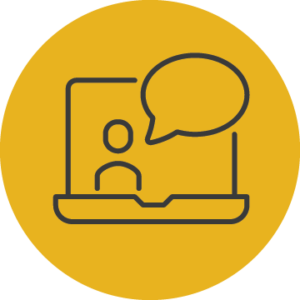
Opinions expressed in AGB blogs are those of the authors and not necessarily those of the institutions that employ them or of AGB.
In the conversations we have with higher education organizations, there is a recognition that the dawn of a new era in artificial intelligence (AI), automation, and personalization is upon us. Technological progress is widening the gap between the data-driven world we live in and the age-old traditional methods of fundraising.
We may very well be in the early stages of experiencing a platform shift with AI, not unlike the introduction of the internet, cloud, mobile devices, or personal computers. These technologies broadened access to information, changed business models, and affected where distribution aggregates. As a result, they had a transformative impact on industry and consumer behaviors.
A classic example is when the world went from desktop computers to mobile smartphones, which enabled a shift in the way we do things. Uber became possible, Instagram made use of a mobile camera, and Netflix used data to make production decisions, leveraging its own viewing information to keep customers engaged. For organizations, there is pressure to adapt and remain relevant as consumer expectations change, and those that don’t respond to market changes brought about by innovation tend to miss out on opportunities and lose relevance.
People now have endless options for how to engage their time, and they expect the organizations and brands they interact with to communicate information that is relevant to them, make intelligent recommendations, and respect their individual preferences. That is the power of personalization at scale, something that AI, combined with the right automations and human feedback, happens to be very good at.
For AI, the fuel is data. Higher education organizations can’t buy their dataset or use census data for transformational impact with AI. Rather, real-world value is realized in smaller, more specialized models that are powered off specific datasets that are unique to each organization. Collecting and connecting these data happen to be among the best use cases for automation.
Take this example of how one university foundation is beginning to collect constituent interest data for more targeted audience segmentation:
A university foundation recently began building emails for a cause-based initiative that gave users several choices about the stories with which they can engage. Considering the constituents’ potential interests, the stories centered around three topics:
- Human and social services
- Community and economic development
- Human rights and social justice
The foundation found that the constituents specifically engaged around the type of content they received. The populations that had a specific interest, rather than a general affinity with the organization, spent more time with the content they received and were more engaged with it.
- The populations that clicked on stories related to their interest had a 16 percent click rate, whereas the general population click rate was below 2 percent.
- Just over 30 percent of those who had expressed interest have reinforced this behavior at least three times in subsequent emails.
This interest project has several neat aspects, such as being able to discover constituents’ areas of interest, which have benefits across multiple units. Also, the data accumulate fast. Being able to segment based on interest means more targeted and relevant messaging and highlights the importance of respecting the rate at which individuals consume the content we provide them. These considerations lead to better strategy.
Capturing individual interests and reflecting those back to your constituents show that the organization is listening and enable a deeper level of personalized communication. This effort is the beginning of a marketing strategy that shifts from a one-way, sender-to-receiver approach to a two-way approach that encourages mutual engagement.
We’re at the start of an era where higher education has the opportunity to reimagine and create new possibilities. Instead of looking at circumstances such as the market, your donor counts, major gift visits, average gifts, and forecasts, consider that we are in the middle of a platform shift. What separates excellence from average lies in new thinking and the ability to reimagine and look into your future. Ten years from now, how your organization interacts with the world online is likely to be of great importance, and so is the connection you’ve built with this generation.
Rachel Crosbie is vice president of operations and strategy at Fundmetric.
With Thanks to AGB Mission Sponsor: Fundmetric

RELATED RESOURCES

Webinar On Demand
Gaining an Edge for Education: An Introduction to AI in Advancement

Webinar On Demand
Addressing AI’s Future Role in the Boardroom


